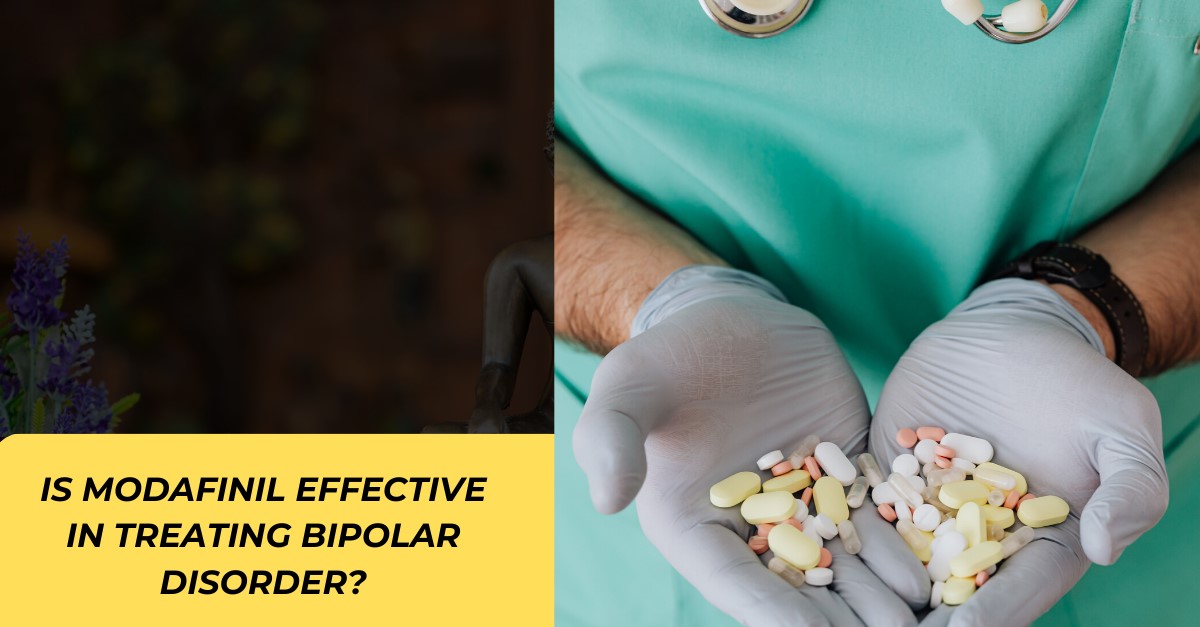Bipolar disorder is a form of mental disease with catastrophic effects. A variety of misunderstandings and myths concerning BPD contribute to the disorder’s late diagnosis. The diagnosis and treatment of the illness are both difficult and ill-defined. However, the risks associated with BPD are rather serious. Self-harm is committed by 30-40% of BPD patients, while 6% commit suicide. More BPD knowledge must be raised so that people can recognize the indications and seek treatment as soon as possible. It is also critical for the advancement of BPD therapy.
Modafinil, the latest smart drug, has already been helping patients suffering from a variety of mental diseases. Despite being a CNS stimulant, it is rather safe to use. As a result, it is now possible to buy Modafinil online, even without requiring a prescription. In this post, we’ll examine everything we presently understand concerning BPD from the standpoint of medical experts before looking into whether Modafinil might be used to treat BPD.
Contents
Bipolar Disorder Overview
As the name indicates, bipolar disorder is a mental ailment in which two highly serious mental disorders arise during the same period or in recurrent patterns. This indicates that people with BPD have symptoms of two different mental diseases. These disorders are mania and depression. Although most of us are familiar with the concept of depression and identify it as a condition, mania is generally overlooked, irrespective of the fact that it may be more dangerous than depressive episodes and is connected with a greater risk of suicide.
Those suffering from BPD have a recurrent cycle of melancholy and mania. The frequency and severity of each, however, varies from person to person. For example, while the intensity of the phases varies, some people endure intense sadness with only occasional mania, and others experience phase shifts on cue. As a result, bipolar disorder is divided into three subtypes.
Subtypes
- Bipolar I Disorder – Type I BPD is an extreme condition of bipolar illness marked by episodes of high mania followed by profound depression. Every stage may occur more often or for a longer period of time, and they do not need to occur on time.
- Bipolar II Disorder – People with type II BPD still have considerable depression, however, the intensity of the manic periods is less severe. Because the depressive periods of this kind of BPD can last longer than the manic episodes, it is sometimes misdiagnosed as depression in the form of Major Depressive Disorder (MDD).
- Cyclothymia – Cyclothymia is an increasingly prevalent kind of BPD that manifests as recurrent mania and depression in submaximal intensity cycles.
Symptoms
BPD symptoms include mania and depression cycles. A less severe form of mania called hypomania can also manifest. The warning signs of these conditions are listed below:
Depression
- a considerable lack of enthusiasm
- erratic sleeping habits
- Sadness, fatigue, or sluggish behavior
- agitation or a lack of energy
- feeling of insignificance
- inappropriate guilt ambiguity
- suicidal thoughts
Mania
- unusually cheerful or nervous
- frenetic bursts of energy and activity or excitement
- an exaggerated sense of happiness and confidence
- fewer sleep hours
- increased talkativeness
- agitated thinking, and distractibility
- ineffective decision-making
Hypomania
- ecstatic
- intense feeling of well-being
- overly energetic
- furious and angered
- enhanced sexual vigor
- distracted
- lack of focus
Cause
The actual pathophysiology of BPD, like that of most other mental illnesses, is yet unknown. However, it is mainly regarded to be a condition in which patients’ brains lose control of their emotions. Patients with BPD generally have limbic system problems, which is a portion of the prefrontal cortex area of the brain. There are reasons to believe that BPD is genetic and that people with family members who have the condition are more prone to develop it themselves. Furthermore, three genes have already been discovered to be strongly related to BPD. However, environmental variables such as trauma can also contribute to BPD. Acquired neurological abnormalities are typically the cause of bipolar disease.
Intervention
BPD is treated with psychotherapy and medication. The following medications are widely used to treat BPD:
- Lithium, carbamazepine, valproate, lamotrigine, and other mood stabilizers
- Aripiprazole, like antipsychotic medicines
- SSRI antidepressants, Olanzapine, haloperidol, and risperidone.
Can Modafinil Work for BPD Treatment?
Modafinil as a CNS stimulant primarily affects the dopamine channel in the body. Modafinil is a chemical that can connect to neurons’ dopamine reuptake proteins. As a result, the time that dopamine spends in neuronal synapses increases, as does its influence.
The neurotransmitter dopamine produces sensations of concentration, contentment, pleasure, and euphoria. This means that if dopamine is available in neuronal synapses, you will feel happy. Naturally, the body has a counter-mechanism for deactivating these sensations. This occurs when tiny reuptake proteins on neurons actively attach to and remove dopamine from the neural synapse.
Modafinil interacts with the reuptake proteins, preventing them from binding to dopamine and so removing it from the synapse.
Several psychiatrists are currently prescribing modafinil to persons with early-stage BPD, particularly young adults.
As previously stated, treating BPD typically entails addressing depression along with mania as different disorders. Modafinil has been shown to be quite useful in treating depression. Most modern medications work by extending the action of serotonin inside the body.
Although drugs that increase dopamine levels are available, they are rarely administered to individuals suffering from depression because of the substantial risk of addiction. Modafinil does not lead to dependency. It opens the door for dopamine to be discussed in the context of depression therapy. Several recent research demonstrate that dopamine is much more beneficial than serotonin in treating depression.
In terms of mania management, it may appear contradictory to prescribe a medicine that might cause euphoria in manic patients. It is vital to remember that modafinil is merely a weak DRI that does not provide intense exhilaration. Its main impacts include motivation and, most significantly, attention. Manic patients are more likely to lose attention, which modafinil may absolutely assist with.
Conclusion
In this article, we go into great length on the causes and symptoms of BPD. We also discussed how Modafinil impacts our bodies and how it works. Our discussions revealed that using Modafinil to manage bipolar disorder can provide a novel approach to treatment and highly effective results.




